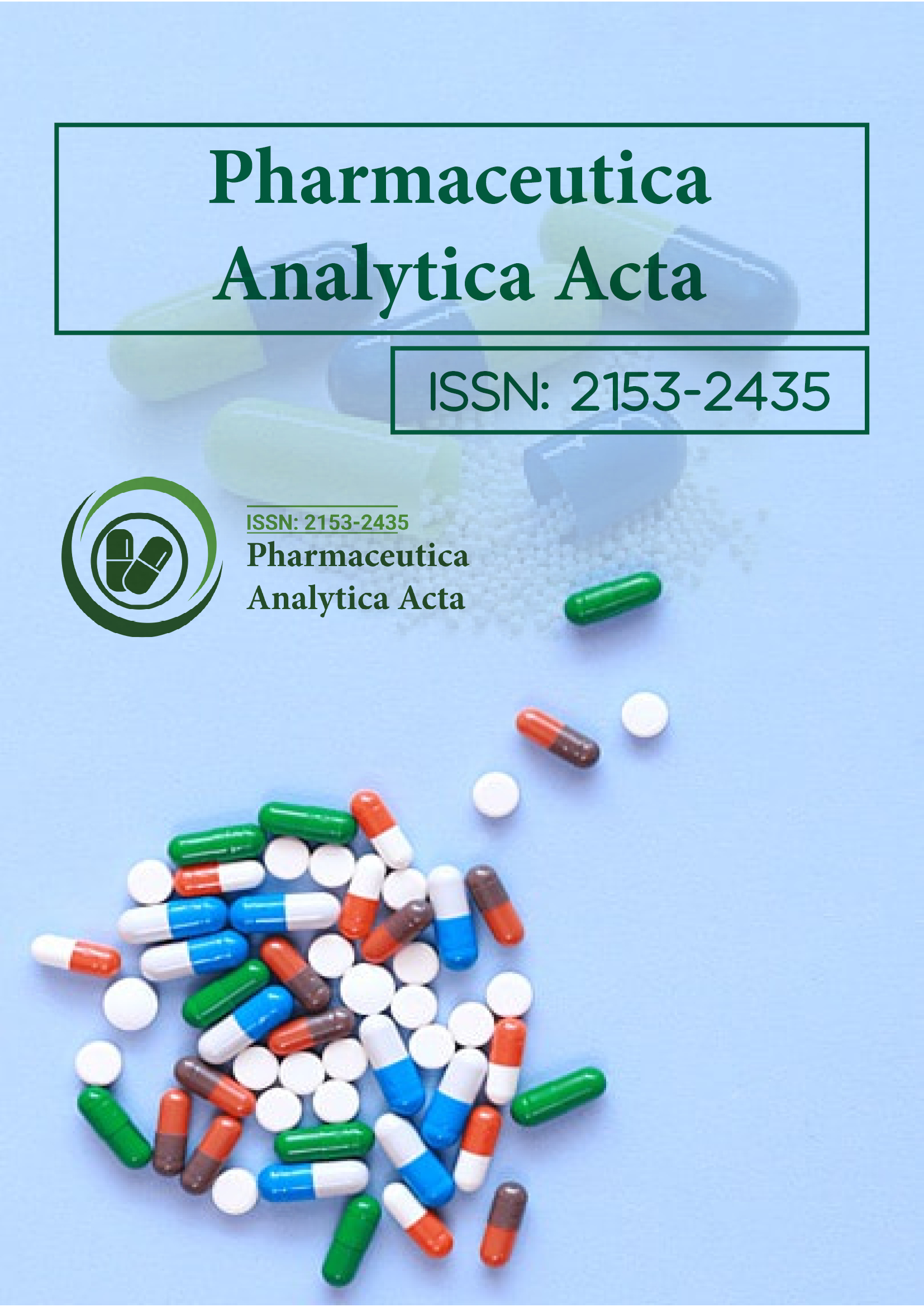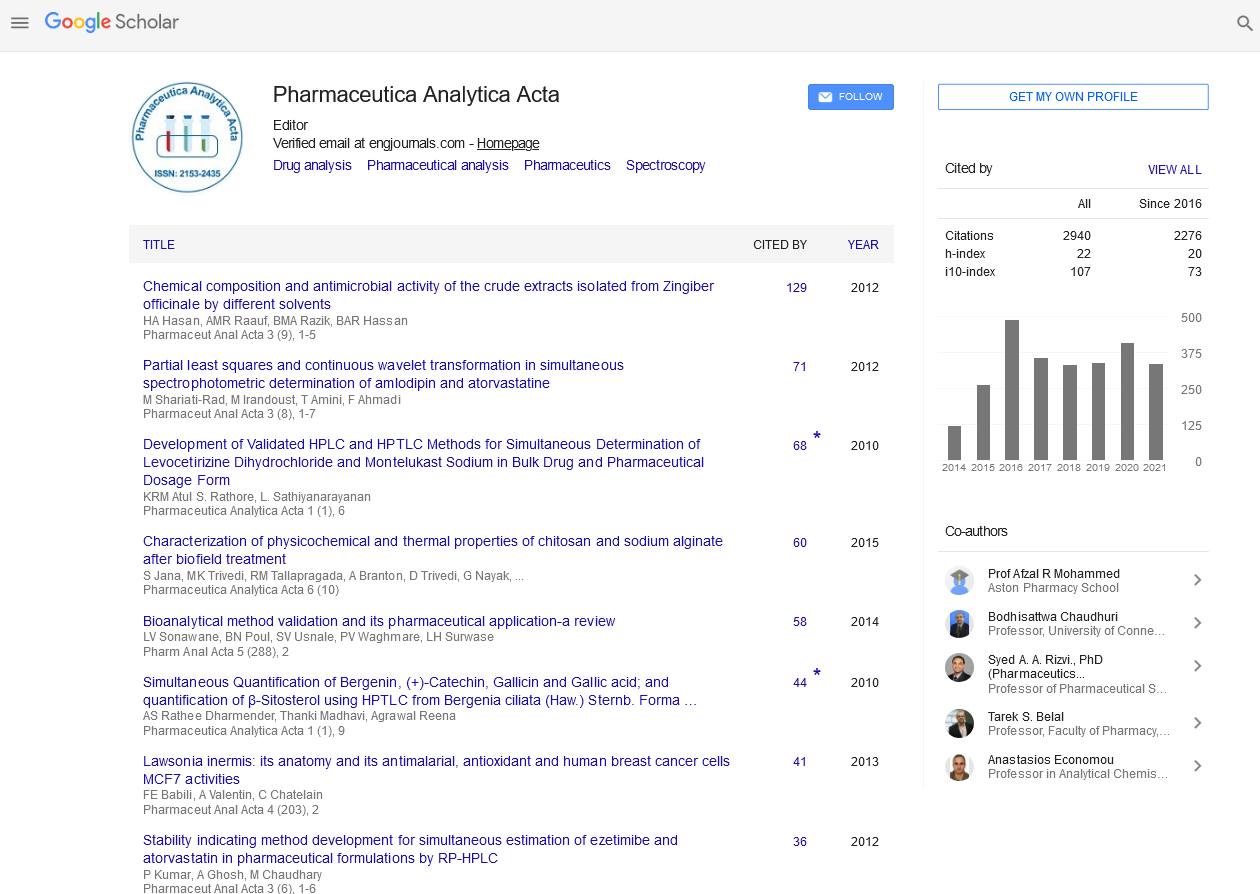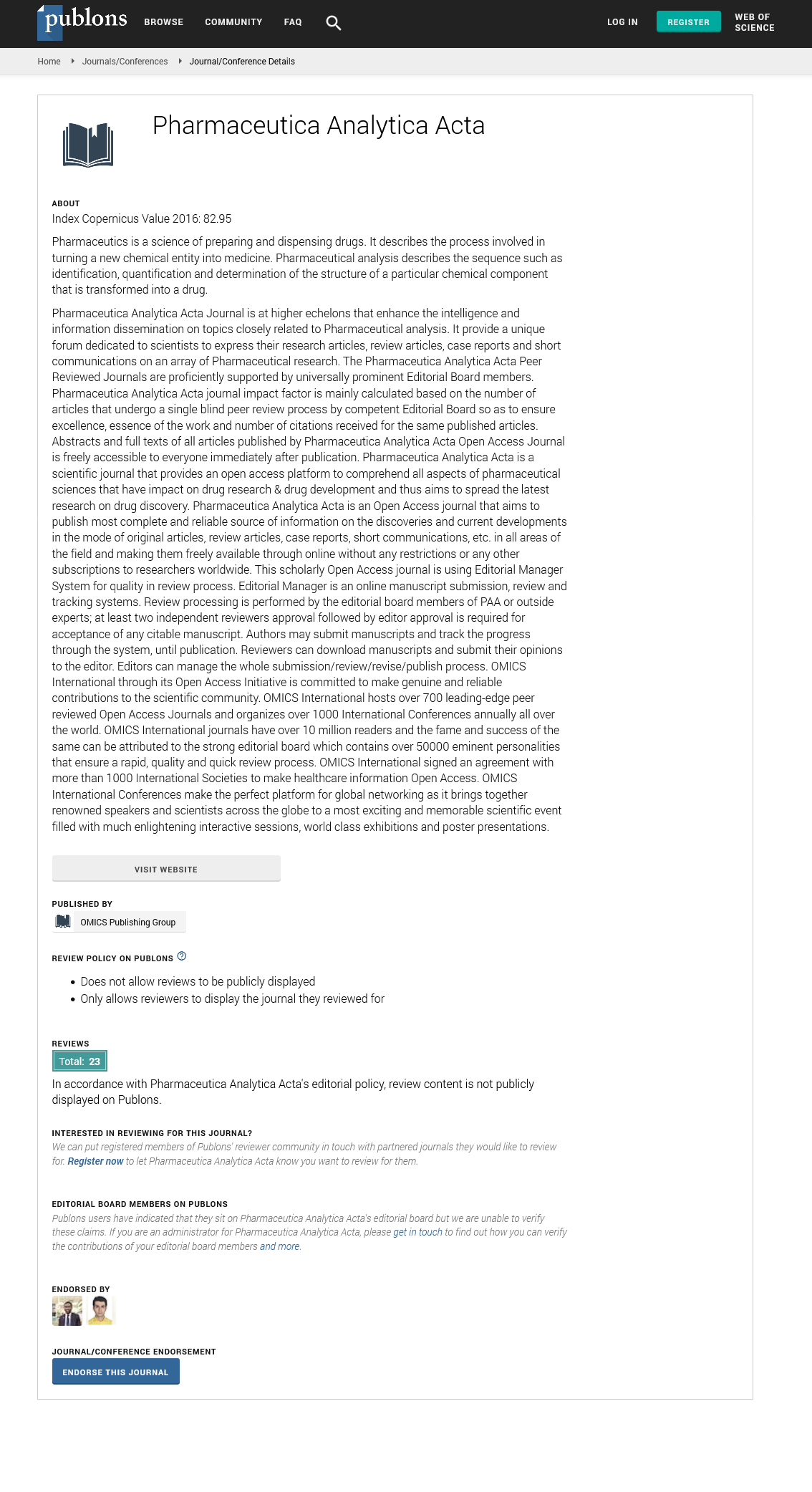Indexed In
- Open J Gate
- Genamics JournalSeek
- Academic Keys
- JournalTOCs
- The Global Impact Factor (GIF)
- China National Knowledge Infrastructure (CNKI)
- Ulrich's Periodicals Directory
- RefSeek
- Hamdard University
- EBSCO A-Z
- OCLC- WorldCat
- Publons
- Geneva Foundation for Medical Education and Research
- Euro Pub
- Google Scholar
Useful Links
Share This Page
Journal Flyer

Open Access Journals
- Agri and Aquaculture
- Biochemistry
- Bioinformatics & Systems Biology
- Business & Management
- Chemistry
- Clinical Sciences
- Engineering
- Food & Nutrition
- General Science
- Genetics & Molecular Biology
- Immunology & Microbiology
- Medical Sciences
- Neuroscience & Psychology
- Nursing & Health Care
- Pharmaceutical Sciences
Perspective - (2023) Volume 14, Issue 3
Spatial Visualization of Drugs and Metabolites by Mass Spectrometry Imaging
Blakely Gimineaz*Received: 02-Jun-2023, Manuscript No. PAA-23-22054; Editor assigned: 05-Jun-2023, Pre QC No. PAA-23-22054(PQ); Reviewed: 19-Jun-2023, QC No. PAA-23-22054; Revised: 26-Jun-2023, Manuscript No. PAA-23-22054(R); Published: 03-Jul-2023, DOI: 10.35248/2153-2435.23.14.735
Description
The potent technology known as Mass Spectrometry Imaging (MSI), molecules found in biological samples including tissues and organs can be seen spatially without the requirement for tagging or extraction. The distribution and localization of medicines and their metabolites in tissues and organs, as well as their pharmacokinetic and pharmacodynamics characteristics, as well as their potential toxicity and efficacy, can be revealed by MSI. The molecular processes of drug action and metabolism, as well as the interactions between medications and endogenous molecules such proteins, lipids, and metabolites, can all be better understood with the use of MSI.
The use of different MSI techniques, such as Matrix-Assisted Laser Desorption/Ionization (MALDI), Secondary Ion Mass Spectrometry (SIMS), and Desorption Electrospray Ionization (DESI), to visualize the distribution and localization of drugs and their metabolites in tissues and organs. The most popular MSI method for analyzing drugs is MALDI-MSI. In order to create ions from the molecules on the surface, a matrix solution is applied to the tissue or organ part before being exposed to laser light. A mass spectrometer is then used to detect the ions, and software is used to rebuild their geographical distribution. Drugs, metabolites, peptides, proteins, lipids, and sugars can all be found using MALDI-MSI, which also has a high sensitivity and resolution for detecting a wide variety of compounds. In order to provide supplementary information on the morphology and function of the tissue or organ, MALDI-MSI can also be combined with other methods, such as immunohistochemistry or fluorescence microscopy.
A secondary ion beam is emitted from the surface of the tissue or organ segment as a result of the main ion beam bombardment used in SIMS-MSI, another MSI technique. After then, a mass spectrometer picks up the secondary ions, and software reconstructs their geographical distribution. Low molecular weight compounds, such as those found in medicines, metabolites, lipids, and sugars, can be detected using SIMS-MSI with a high degree of sensitivity and resolution. Additionally, SIMS-MSI can reveal details about the molecules' isotopic composition and elemental make-up.
The ionization of molecules from the surface are brought about by spraying a solvent onto the tissue or organ segment at ambient pressure in the relatively recent MSI technology known as DESI-MSI. The ions are then picked up by a mass spectrometer, and software reconstructs their spatial distribution. Drugs, metabolites, peptides, proteins, lipids, and sugars are examples of high molecular weight substances that DESI-MSI can identify with high sensitivity and resolution. There is no need to prepare any samples before using DESI-MSI on fresh or frozen tissues or organs.
In comparison to more traditional techniques Like Liquid Chromatography-Mass Spectrometry (LC-MS) or Gas Chromatography-Mass Spectrometry (GC-MS), the use of MSI to visualize the distribution and localization of medicines and their metabolites in tissues and organs has a number of advantages. From micrometers to centimeters, MSI can provide spatial information on the molecular distribution. In addition, MSI can prevent sample loss or contamination during sample processing and maintain the molecular integrity. Multiple compounds can be detected simultaneously in a single assay sample to MSI.
Citation: Gimineaz B (2023) Spatial Visualization of Drugs and Metabolites by Mass Spectrometry Imaging. Pharm Anal Acta. 14:735.
Copyright: © 2023 Gimineaz B. This is an open-access article distributed under the terms of the Creative Commons Attribution License, which permits unrestricted use, distribution, and reproduction in any medium, provided the original author and source are credited.


